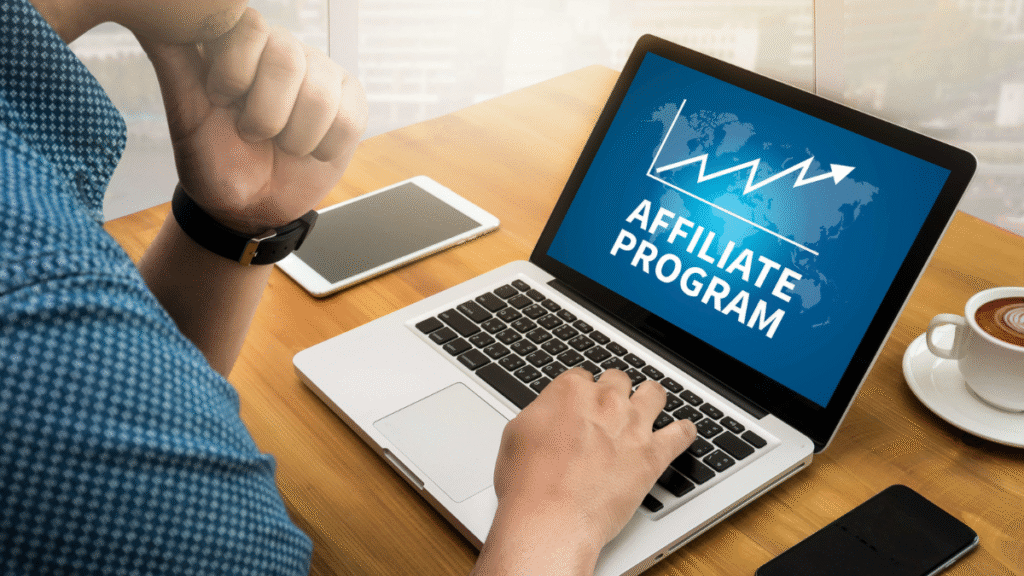In today’s digital-first world, consumers don’t just rely on brands to make purchasing decisions—they rely on influencers they trust. Influencer marketing has become a cornerstone of digital strategy, helping brands of all sizes reach targeted audiences, build credibility, and drive conversions through authentic recommendations.
Whether you’re a small business owner, startup marketer, or curious creator, this step-by-step guide to influencer marketing will give you the foundation to launch successful influencer campaigns from scratch in 2025.
What Is Influencer Marketing?
Influencer marketing is a type of social media marketing that involves partnering with individuals who have an established and engaged audience to promote your product, service, or brand. These influencers act as trusted voices within their communities, making their recommendations more effective than traditional advertising.
Why Influencer Marketing Matters in 2025
Consumers Trust People Over Brands
In 2025, 82% of consumers say they are more likely to buy based on a recommendation from an influencer than from a brand ad.
Evolving Algorithms
As organic reach declines on social platforms, influencer partnerships help brands reach the right people more authentically and efficiently.
High ROI
Influencer marketing offers an average ROI of $5.78 for every $1 spent, and often even higher in niche industries.
Types of Influencers
Understanding different influencer tiers helps you choose the right partner based on goals and budget.
1. Nano-Influencers (1K–10K followers)
- Highly engaged niche audiences
- Ideal for local or micro-campaigns
- Cost-effective and authentic
2. Micro-Influencers (10K–100K followers)
- Strong engagement rates
- Great for product launches, reviews, or user-generated content
3. Macro-Influencers (100K–1M followers)
- Larger reach and broader exposure
- Ideal for brand awareness campaigns
4. Mega/Celebrity Influencers (1M+ followers)
- Huge reach, less engagement
- Best for major product launches or global brand recognition
Step-by-Step Guide to Influencer Marketing for Beginners
Step 1: Define Your Campaign Goals

Start with clarity. Ask yourself:
- Are you aiming for brand awareness, website traffic, sales, or content creation?
- What KPIs (Key Performance Indicators) will you use to measure success?
Common influencer marketing goals include:
- Increase Instagram followers by 20%
- Drive 500 visits to a product page
- Generate 100 discount code redemptions
Step 2: Identify Your Target Audience
Before you choose influencers, understand your audience:
- Age, gender, location
- Interests and online behavior
- Preferred social platforms
Use tools like Google Analytics, Meta Insights, or social media polls to gather this data.
Step 3: Choose the Right Social Platform
Each platform supports different types of content and audiences:
- Instagram – Great for visual content, product photos, Reels, and Stories
- TikTok – Best for short-form video and viral trends
- YouTube – Ideal for tutorials, reviews, and unboxing videos
- LinkedIn – Effective for B2B influencer marketing
- Twitter/X – Good for niche communities and real-time engagement
- Pinterest – Visual search, DIY, and lifestyle influencers
Step 4: Find the Right Influencers
Methods to Discover Influencers:
- Search hashtags relevant to your niche (e.g., #skincaretips, #fitnessjourney)
- Use influencer platforms like:
- Upfluence
- AspireIQ
- Heepsy
- Influence.co
- Check your own followers – Some may already love your brand
Qualities to Look for:
- Engagement Rate (likes/comments per post)
- Audience Authenticity (no fake followers)
- Content Quality & Relevance
- Past Brand Collaborations
- Communication Style
Step 5: Reach Out and Build Relationships
When contacting influencers:
- Personalize your message
- Be transparent about your goals and expectations
- Offer value (money, free product, exposure, affiliate opportunities)
Example outreach message:
“Hi [Name], I love your content around [topic]! We’re launching a new [product] and would love to collaborate with you. Are you open to discussing a partnership? We’d be happy to send you the product and compensation details.”
Step 6: Set Clear Terms and Agreements
Avoid confusion by defining everything upfront:
- Deliverables (number of posts, stories, videos)
- Platform(s) and posting dates
- Compensation (flat fee, commission, barter)
- Usage rights (can you reuse their content?)
- FTC compliance (disclosure of paid partnerships)
Use simple influencer contracts or written agreements.
Step 7: Track Performance and ROI
Use analytics tools to measure your campaign’s success. Look for:
- Engagement (likes, comments, shares)
- Reach and impressions
- Traffic to your website or landing page
- Discount code redemptions or affiliate link clicks
- User-generated content created
Many platforms now offer creator performance reports or collab dashboards.
Influencer Marketing Campaign Ideas for Beginners
1. Product Reviews & Unboxings
Send influencers your product and have them review or unbox it live.
2. Giveaways
Partner with influencers to run contests that boost reach and engagement.
3. Affiliate Programs

Offer influencers a unique promo code or affiliate link and pay per sale.
4. “A Day in the Life” Takeovers
Let influencers take over your Instagram Stories or YouTube channel for a day.
5. Brand Challenges
Create a fun TikTok or Reels challenge and have influencers promote it to their followers.
Common Mistakes to Avoid
- Choosing influencers based only on follower count
- Not checking for fake followers or bots
- Offering zero creative freedom
- Ignoring engagement rate
- Forgetting to track metrics or ROI
- Not disclosing paid partnerships
Influencer marketing works best when the partnership feels genuine and organic—not forced or overly scripted.
Influencer Marketing Tools for Beginners
- Upfluence – Influencer discovery and campaign tracking
- BuzzSumo – Find top content creators by topic
- Canva – Design branded content and templates
- Bitly – Trackable affiliate or campaign links
- HypeAuditor – Check influencer authenticity and audience demographics
- Later or Buffer – Content scheduling and planning
Budgeting for Influencer Campaigns
Influencer pricing varies based on their niche, reach, and platform.
Sample Price Ranges:
- Nano-influencers: $25–$100 per post
- Micro-influencers: $100–$500 per post
- Macro-influencers: $1,000–$10,000+
- Celebrity influencers: $10,000–$100,000+
Negotiate fairly and consider long-term partnerships for better value and stronger brand alignment.
Also Read: The Ultimate Guide To Content Marketing In 2025
Conclusion
Influencer marketing in 2025 offers brands a powerful way to reach engaged audiences through authentic storytelling and trusted voices. As a beginner, the key to success is to start small, choose the right influencer, and focus on building real relationships over time.
By defining clear goals, using the right tools, tracking performance, and staying compliant, influencer marketing can become one of your most rewarding and cost-effective digital strategies. Whether you’re looking to grow awareness or drive sales, influencer marketing offers a human touch in a digital world.
FAQs
1. How do I find influencers relevant to my brand?
You can find influencers by searching relevant hashtags, using influencer marketing platforms, or reviewing your own followers for potential creators.
2. How much should I pay an influencer?
Rates vary by niche and follower count. Nano and micro-influencers often accept $50–$500 per post, while larger creators may charge thousands. Always negotiate based on value and deliverables.
3. What platform is best for influencer marketing?
Instagram and TikTok are popular for B2C; LinkedIn is best for B2B. Choose a platform based on where your audience spends time and the type of content you want to create.
4. Do I need a contract when working with influencers?
Yes. A simple agreement helps avoid misunderstandings and covers content rights, payment, posting schedule, and FTC guidelines.
5. What metrics should I track in an influencer campaign?
Track engagement (likes, shares, comments), reach, website clicks, sales via affiliate links, and conversions from promo codes.


